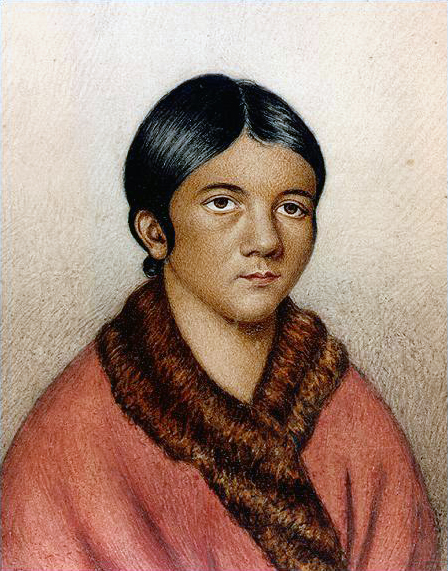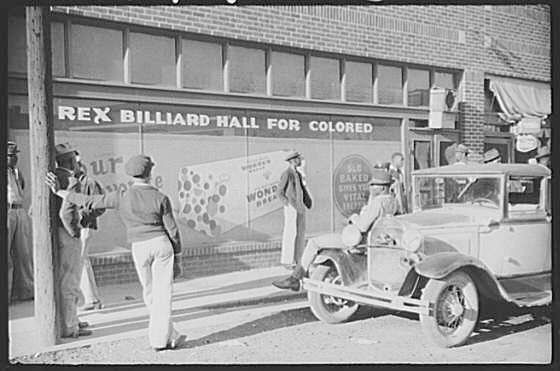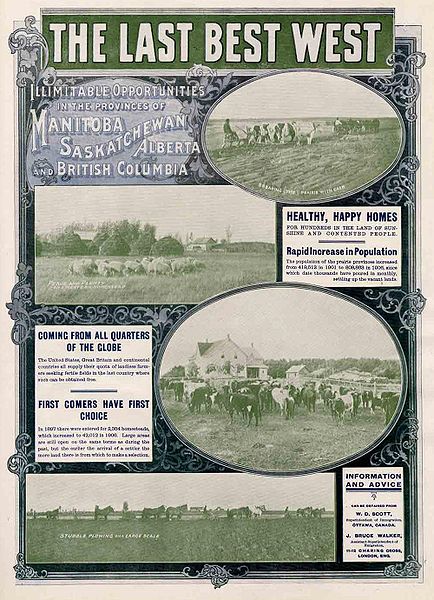Chapter 11. Race and Ethnicity
11.4. Intergroup Relations and the Management of Diversity
Throughout Western history intergroup relations (relationships between different groups of people) have been subject to different strategies for the management of diversity. The problem of management arises when differences between different peoples are regarded as so insurmountable that it is believed they cannot easily coincide or cohabit with one another. A strategy for the management of diversity refers to the systematic methods used to resolve conflicts, or potential conflicts, between groups that arise based on perceived differences. How can the unity of the self-group or political community be attained in the face of the divisive presence of non-selves or others?
As Richard Day (b. 1964) describes it, the template for the problem of diversity was laid down at least as early as the works of the ancient Greeks Herodotus, Plato, and Aristotle: “the division of human individuals into groupable ‘types,’ the arrangement of these types into a hierarchy, the naming of some types as presenting a ‘problem,’ and the attempt to provide ‘solutions’ to the problem so constructed” (2000, p. 7). The solutions proposed to intergroup relations have ranged along a spectrum between tolerance and intolerance. The most tolerant form of intergroup relations might be multiculturalism, in which cultural distinctions are made between groups, but the groups are regarded to have equal standing in society. At the other end of the continuum are assimilation, expulsion, and even genocide — stark examples of intolerant intergroup relations.
Genocide
Genocide, the deliberate annihilation of a targeted (usually subordinate) group, is the most toxic intergroup relationship. Historically, genocide has included both the intent to exterminate a group and the act of exterminating of a group, intentional or not.
The most well-known case of genocide is Hitler’s attempt to exterminate the Jewish people in the first part of the 20th century. Also known as the Holocaust, the explicit goal of Hitler’s “Final Solution” was the eradication of European Jewry, as well as the decimation of other minority groups such as the Roma, people with disabilities, and homosexuals. With forced emigration, concentration camps, and mass executions in gas chambers, Hitler’s Nazi regime was responsible for the deaths of 12 million people, 6 million of whom were Jewish. Hitler’s intent was clear, and the high Jewish death toll certainly indicates that Hitler and his regime committed genocide. But how can genocide that is not so overt and deliberate be understood?

During the European colonization of North America, some historians estimate that Indigenous populations dwindled from approximately 12 million people in the year 1500 to barely 237,000 by the year 1900 (Lewy, 2004). European settlers coerced Aboriginal people off their own lands, often causing thousands of deaths in forced removals, such as occurred in the Cherokee or Potawatomi Trail of Tears in the United States. Settlers also enslaved Aboriginal people and forced them to give up their religious and cultural practices. The Beothuk of Newfoundland were decimated in their encounter with Europeans in the 1700s through disease, violence and starvation after being forced inland from their traditional settlement at Red Indian Lake and Notre Dame Bay by settlers (Marshall, 1996). By the early 1800s they had ceased to exist as a nation; the last known Beothuk, Shawnadithit, dying in 1829.
But the major cause of Aboriginal death was neither slavery nor war nor forced removal: it was the introduction of European diseases and Aboriginal people’s lack of immunity to them. Smallpox, diphtheria, tuberculosis and measles flourished among North American Aboriginal peoples, who had no exposure to the diseases and no ability to fight them. Quite simply, these diseases decimated them. How planned this genocide was remains a topic of contention. Some argue that the spread of disease was an unintended effect of conquest, while others believe it was intentional with rumours of smallpox-infected blankets being distributed as “gifts” to Aboriginal communities.
Importantly, genocide is not a just a historical concept, but one practiced in contemporary societies. In 1994, approximately 500,000 Tutsi, three quarters of the Tutsi population, were murdered by armed Hutu militias in Rwanda (Des Forges, 1999). Since 2003, ethnic and geographic conflicts in the Darfur region of Sudan have led to hundreds of thousands of deaths. As part of an ongoing land conflict, the Sudanese government and their state-sponsored Janjaweed militia have led a campaign of killing, forced displacement, and systematic rape of Darfuri people (Human Rights Watch, 2004). A treaty was signed in 2011 but an estimated 400,000 people have died due to violence, starvation and disease. In Myanmar (Burma), persecutions, rapes, assaults and killings of the Muslim Rohingya minority by the Myanmar military since 2017 have lead to an estimated 25,000 dead and over 700,000 in exile in neighbouring Bangladesh (Habib, 2018; UN Human Rights Council, 2019).
Expulsion
Expulsion refers to a dominant group forcing a subordinate group to leave a certain area or country. As seen in the examples of the Holocaust and the Rohingya minority in Myanmar, expulsion can be a factor in genocide. However, it can also stand on its own as a destructive group interaction. Expulsion has often occurred historically with an ethnic or racial basis. The Great Expulsion of the French-speaking Acadians from Nova Scotia by the British beginning in 1755 is perhaps the most notorious case of the use of expulsion to manage the problem of diversity in Canada. The British conquest of Acadia (which included contemporary Nova Scotia and parts of New Brunswick, Quebec, and Maine) in 1710 created the problem of what to do with the French colonists who had been living there for 80 years. In the end, approximately three-quarters of the Acadian population were rounded up by British soldiers and loaded onto boats without regard for keeping families together. Many of them ended up in Spanish Louisiana where they formed the basis of contemporary Cajun culture.
On the West Coast, the War Measures Act was used in 1942 after the Japanese government’s attack on Pearl Harbor to designate Japanese Canadians as enemy aliens and intern them in camps in the Slocan Valley in British Columbia, in southern Alberta, and elsewhere in Canada. Their property and possessions were sold to pay for their forced removal and internment. Over 22,000 Japanese Canadians (14,000 of whom were born in Canada) were held in these camps between 1941 and 1949, despite the fact that the RCMP and the Department of National Defence reported there was no evidence of collusion or espionage. In fact, many Japanese Canadians demonstrated their loyalty to Canada by serving in the Canadian military during the war. This was the largest mass movement of people in Canadian history. At the end of World War II, Japanese Canadians were obliged to settle east of the Rocky Mountains or face deportation to Japan. This ban only ended after 1949, four years after the war’s end. In 1988, Prime Minister Brian Mulroney issued a formal apology for this expulsion, and compensation of $21,000 was paid to each surviving internee.
Segregation
Segregation refers to the physical separation of two groups, particularly in residence, but also in workplace and social functions. It is important to distinguish between de jure segregation (segregation that is enforced by law) and de facto segregation (segregation that occurs without laws but because of other factors). A stark example of de jure segregation is the apartheid movement of South Africa, which existed from 1948 to 1994. Under apartheid, Black South Africans were stripped of their civil rights and forcibly relocated to areas that segregated them physically from their White compatriots. Only after decades of degradation, violent uprisings, and international advocacy was apartheid finally abolished.
De jure segregation occurred in the United States for many years after the Civil War. During this time, many former Confederate states passed “Jim Crow” laws that required segregated facilities for Blacks and Whites. These laws were codified in 1896’s landmark Supreme Court case Plessey v. Ferguson, which stated that “separate but equal” facilities were constitutional. For the next five decades, Blacks were subjected to legalized discrimination, forced to live, work, and go to school in separate — but unequal — facilities. It was not until 1954 and the Brown v. Board of Education case that the Supreme Court declared that “separate educational facilities are inherently unequal,” thus ending de jure segregation in the United States.

De jure segregation was also a factor in Canada’s development. Although slavery ended in Canada in 1834, when Britain abolished slavery throughout the empire, the approximately 60,000 Blacks who arrived with the British Empire Loyalists following the American Revolution and through the “Underground Railroad” up until the end of the American Civil War, were subject to discrimination and differential treatment. Legislation in Ontario and Nova Scotia created racially segregated schools, while de facto segregation of Blacks was practiced in the workplace, restaurants, hotels, theatres, and swimming pools. Similarly, segregating laws were passed in British Columbia, Saskatchewan, and Ontario preventing Chinese- and Japanese-owned restaurants and laundries from hiring White women out of concern that the women would be corrupted (Mosher, 1998). The reserve system created through the treaty process with First Nations peoples can also be regarded as a form of de jure segregation. As was the case in the United States, de jure segregation (with the exception of the reserve system) was largely eliminated in Canada by the 1950s and 1960s.
De facto segregation, however, cannot be abolished by any court mandate. Segregation has existed throughout Canada, with different racial or ethnic groups often segregated by neighbourhood, borough, or parish. Various Chinatowns or Japantowns developed in Canadian cities in the 19th and 20th centuries. The community of Africville was a residentially and socially segregated Black enclave in Halifax established by escaped American slaves. As noted at the beginning of the chapter, some urban neighbourhoods like Richmond, Surrey, and Markham are home to high concentrations of Chinese and South Asians.
Sociologists use segregation indices to measure racial segregation of different races in different areas. The indices employ a scale from 0 to 100, where 0 is the most integrated and 100 is the least. In Vancouver, Toronto, and Montreal, these indices were relatively high (2001 data) for visible minorities as a whole — over 40 — and higher for Chinese and South Asians — over 50 (Walks & Bourne, 2006). This means that 40% of either visible minorities or Whites, 50% of Chinese and South Asians or Whites, would have to move in order for each neighbourhood to have the same racial balance as the whole metro region. However, these indices are much lower than those observed in the United States for Black populations. In the New York metropolitan area, for instance, the Black-White segregation index was 79 for the years 2005–2009. This means that 79% of either Blacks or Whites would have to move in order for each neighbourhood to have the same racial balance as the whole metro region (Population Studies Center, 2010).
Assimilation
Assimilation describes the process by which a minority individual or group gives up its own identity by taking on the characteristics of the dominant culture. In Canada, assimilation was the policy adopted by the government with the Indian Act, which attempted to integrate the Indigenous population by Europeanizing them. Assimilation was also the policy for absorbing immigrants from different lands through the function of immigration.

Canada is a settler nation. With the exception of Indigenous Canadians, all Canadians have immigrant ancestors. In the 20th century, there were three waves of immigration to Canada (Li, 1996). During the wheat boom from 1900 to the beginning of World War I, Canada recruited almost 3 million settlers from various parts of Europe, although many subsequently emigrated to the United States. For the two decades following World War II, another 3 million immigrants arrived (96% from Europe between 1946 and 1954, and 83% from Europe between 1954 and 1967). As described at the beginning of the chapter, the third wave of immigration following the change of the race-based immigration policy saw increasingly larger proportions of immigrants from non-European countries. Most immigrants are eventually absorbed into Canadian culture, although sometimes after facing extended periods of prejudice and discrimination. Assimilation means the loss of the minority group’s cultural identity as the people in that group become absorbed into the dominant culture, while there is minimal to no impact on the majority group’s cultural identity.
Some assimilated groups may keep only symbolic tokens of their original ethnicity. For instance, many Irish Canadians may celebrate Saint Patrick’s Day, many Hindu Canadians enjoy the Diwali festival, and many Chinese Canadians may celebrate Chinese New Year. However, for the rest of the year, other aspects of their originating culture may be forgotten.
Assimilation is considered the opposite of the “cultural mosaic” model understood by Canadian multiculturalism; rather than maintaining their own cultural flavour, subordinate cultures give up their own traditions in order to conform to their new environment. Cultural differences are erased. Assimilation is sometimes described as the American “melting pot” model, where differences “melt away,” although ideally the melting pot model sees the combination of cultures resulting in a new culture entirely. Sociologists measure the degree to which immigrants have assimilated to a new culture with four benchmarks: socioeconomic status, spatial concentration, language assimilation, and intermarriage (Waters and Jimenez, 2005). When faced with racial and ethnic discrimination, it can be difficult for new immigrants to fully assimilate. Language assimilation, in particular, can be a formidable barrier, limiting employment and educational options and therefore constraining growth in socioeconomic status.
Multiculturalism
In the government document, Multiculturalism: Being Canadian, multiculturalism is defined as “the recognition of the cultural and racial diversity of Canada and of the equality of Canadians of all origins” (as cited in Day, 2000). It is represented in Canada by the metaphor of the mosaic, which suggests that in a multicultural society each ethnic or racial group preserves its unique cultural traits while together contributing to national unity. Each culture is equally important within the mosaic. There is a great mixture of different cultures where each culture retains its own identity and yet adds to the colour and configuration of the whole. The ideal of multiculturalism is characterized by mutual respect on the part of all cultures, both dominant and subordinate, creating a polyethnic environment of mutual tolerance and acceptance.

As a strategy for managing diversity, Canada was the first country to adopt an official multicultural policy. In 1971, Prime Minister Pierre Trudeau implemented both a policy of official bilingualism (both French and English would be the languages of the state) and a policy of multiculturalism. The multicultural policy was designed to assist the different cultural groups in Canada to preserve their heritage, overcome cultural barriers to participation in Canadian society, and exchange with other cultural groups in order to contribute to national unity (Ujimoto, 2000). Critics argue that Trudeau’s motives were more oriented to undermining the Québécois separatist movement and winning the votes of urban ethnic communities than distributing more power to ethnic communities (Li, 1996). However, as a result of this policy initiative, multiculturalism was enshrined in the Canadian Constitution in 1982 and in the Multiculturalism Act of 1988 as a fundamental principle of Canadian society. The result is a mechanism, stated in the Canadian Charter of Rights and Freedoms, that obliges Canadian law and federal institutions to operate “in a manner consistent with the preservation and enhancement of the multicultural heritage of Canadians” (as cited in Li, 1996).
Whereas constitutional democracies like Canada are typically based on the protection of individual rights, multiculturalism implies that the protection of cultural difference also depends on protecting group-specific rights or group-differentiated rights (i.e., rights conferred on individuals by virtue of their membership in a group). Kymlicka notes that there are three different ways that the principle of multicultural group-specific rights can be conceived: (1) as self-government rights in which culturally distinct nations within a society attain some degree of political autonomy and self-determination to ensure their survival and development as unique peoples; (2) as polyethnic rights in which culturally distinct groups are able to express their particular cultural beliefs and practices without being discriminated against, and (3) as special representation rights in which the systematic underrepresentation of minorities in the political process is addressed by some form of proportional representation (e.g., reserving a certain number of parliamentary seats for specific ethnic minorities or language groups) (Kymlicka, 1995). While multicultural policy in Canada has generally been implemented on the basis of polyethnic rights, self-government rights have been a key part of Quebecois and First Nations’ claims, and special representation rights have also occasionally been proposed, as was the case for First Nations during the Charlottetown Accord debate in 1992.

While the outcome of Canadian multicultural policy has been the establishment of a generally accepted norm in which no culture takes precedence over any other in Canadian society, at least not in official practice, and all Canadians are recognized as “full and equal participants in Canadian society” (as stated in the Canadian Multiculturalism Act of 1988), there have been a number of flashpoints in which the viability of the policy has been called into question. The case of whether Sikhs in the RCMP should be allowed to wear dastaar while in uniform was an early example. Although it seems trivial today, in 1990 many felt that the right of Sikhs to maintain their religious practice undermined a core and inviolable tradition of both the police force and Canada. As such, the case served as an emblem of a deeper fear about multiculturalism, namely that it would foster a dangerous fragmentation of an already fragile Canadian unity. In particular, new non-European immigrants were seen by some as too different and their demands for accommodation too disruptive to “Canadian” values and practices to sustain. Of course, similar claims about the unassimilable differences of immigrants from Ireland, eastern Europe, and southern Europe were made in earlier waves of immigration.
More recently a similar issue has played out in Quebec with respect to the Parti Québécois’ Quebec Charter of Values, which sought to secularize government institutions by removing visible symbols of religious practice like the Sikh dastaar, Muslim hijab, or Jewish kippah from public service. In 2019, Bill 21, “An Act respecting the laicity of the State,” was introduced by the Coalition Avenir Québec (CAQ) government and passed by the National Assembly of Quebec. Civil service employees in positions of authority, including teachers, crown prosecutors and police officers, are prohibited from wearing religious symbols, and people’s faces are required to be uncovered when providing or receiving certain government services.
While the positive outcome of the multicultural policy is that the Canadian population remains remarkably accepting of diversity — the most accepting of all OECD countries in 2011 according to the Gallup World Poll (Conference Board of Canada, 2013) — issues around multiculturalism continually bring up the problem of ethical relativism, the idea that all cultures and all cultural practices have equal value (see Chapter 3. Culture for further discussion). In a fully multicultural society, what principles can be appealed to in order to resolve issues where different cultural beliefs or practices clash? Richard Day (2000) has argued that rather than resolving the problem of diversity, official multiculturalism has exacerbated it. “Far from achieving its goal, this state sponsored attempt to design a unified nation has paradoxically led to an increase in both the number of minority identities and in the amount of effort required to ‘manage’ them” (Day, 2000).
Hybridity
Hybridity is the process by which different racial and ethnic groups combine to create new or emergent cultural forms of life. Rather than a multicultural mosaic, where each culture preserves its unique traditions, or a melting pot, where cultures assimilate into the majority group, the hybrid combination of cultures results in a new culture entirely. The post-colonialist theorist Homi Bhabha (b. 1949) suggested that the mingling of formerly fixed cultural identities “open[s] up the possibility of a cultural hybridity that entertains difference without an assumed or imposed hierarchy” (Bhabha, 1994). The contemporary cultures of the Caribbean, for example, are a mixture of European colonization, African roots, South Asian influences, and a New World setting that defies the imposition of a single cultural identity. Those things that are regarded as essentially Caribbean like the accents, racial blending, religious beliefs, spicy cuisines, and music have thoroughly diverse origins while being continuously reinvented (Hall, 1990).
As noted earlier in this chapter, intermarriage between people of different races or cultures creates new hybrid identities. The Métis were Canada’s original hybrid culture (Day, 2000). More recently, Canadian culture has been home to numerous emergent cultural forms, some superficial and some profound, due to the intermingling of people from diverse backgrounds. From fusion cuisine to martial arts and yoga, from klezmer to reggae, and including alternative spiritual and healing practices, hybridity seems to capture some of the fluidity of contemporary Canadian culture. As the category of multiple ethnic origins by which people identify themselves grows, it is possible that the distinctions between ethnicities or between races that supported the “us versus them” narratives of earlier forms of racism and ethnocentrism might disappear all by themselves (Day, 2000).
Media Attribution
- Figure 11.17 Shanawdithit portrait/”A female Red Indian of Newfoundland” by Philip Henry Gosseis, via Wikimedia Commons, is in the public domain.
- Figure 11.18 “Billiard Hall for Coloured” by Marion Post Wolcott, via Wikimedia Commons, is in the public domain. [This image is available from the United States Library of Congress‘s Prints and Photographs division under the digital ID fsa.8a41396.]
- Figure 11.19 The Last Best West by The Globe — Toronto (http://commons.wikimedia.org/wiki/File:The_Last_Best_West.jpg) from Library and Archives Canada [Special editions of Canadian newspapers], via Wikimedia Commons, is in the public domain.
- Figure 11.20 Reach Toronto by paul (dex) from Toronto, via Wikipedia, is used under CC BY 2.0 licence.
- Figure 11.21 Baltej Singh Dhillon, RCMP graduation day in Regina, May 1990. (Photo used by permission of Baltej Singh Dhillon).

